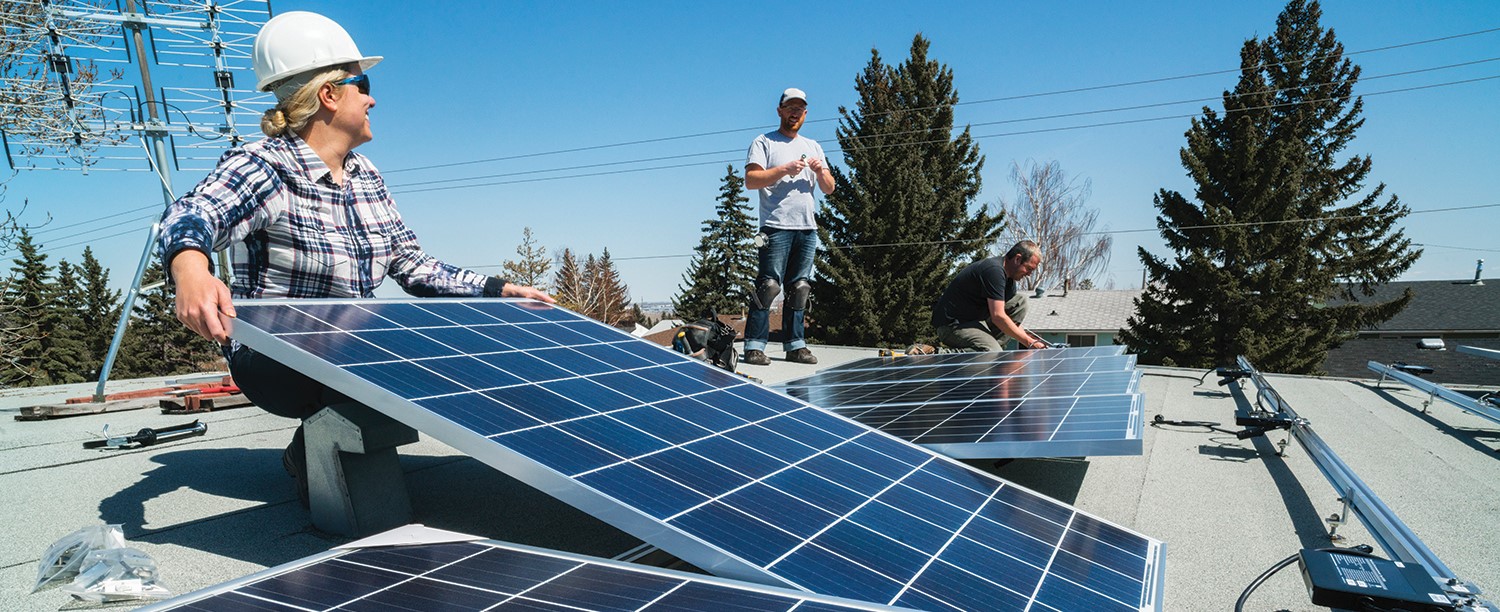
Clean energy and efficient buildings
-
Pursue 100% carbon-free, reliable and affordable electrical power and heat sources through policies, investments and partnerships.
-
Reduce greenhouse gas emissions in buildings by promoting conservation and efficiency. Reduce emissions from construction by promoting lower-carbon design, material re-use and alternative fuels.
-
Invest in infrastructure that supports living-wage jobs and careers and clean energy and contribute to a more stable climate.
GOAL 1: TRACK AND REDUCE ENERGY USE AND PURSUE 100% CARBON-FREE ENERGY SOURCES IN COUNTY-OWNED FACILITIES.
-
Convert systems that use fossil fuels to clean, renewable energy sources in county buildings?Invest in infrastructure updates that reduce emissions and increase energy efficiency in county-owned buildings.
-
Convert systems that use fossil fuels to clean, renewable energy sources in county buildings?
-
Expand training for county facilities managers on best practices for reducing energy use.
-
Create renewable energy guidelines for county-owned buildings.
-
Explore options for an internal county financial energy reduction incentive encourage and expand department-based reductions in energy use, including facilities and transportation energy.
Goal 2: Increase ability of county-owned and county-funded buildings to withstand the impacts of climate change.
-
Evaluate reuse/recovery of wasted thermal energy to heat and cool existing buildings.
-
Adopt requirements based on best management practices for reducing energy use for county programs that invest in new or rehabbed buildings.
-
Encourage developers of new county-owned or county-funded housing construction and rehabilitation to plan for resiliency/adaptation (e.g., electrification, waterproofing, raising mechanical devices, and coordinating with energy improvements, installing passive cooling building and landscape features), while increasing affordability and maintaining urban density.
-
Research options for lowering energy burden through design criteria for affordable housing.
-
Adapt energy goals for county-owned buildings utilizing real-time monitoring of building energy consumption and recommend strategies to reduce energy use.
Goal 3: Provide resources to residents on alternative energy and energy efficiency options.
-
Identify opportunities to consolidate and streamline programs providing energy assistance, weatherization, and utility efficiency. Make them easier to access, navigate and scale up in multifamily and single-family buildings. Develop strategies for renters and homeowners - especially in multi-family housing upgrades and for underrecognized and climate vulnerable communities.
-
Share clear guidance on alternative energy resources for Ramsey County cities to share with residents.
-
Develop policies and support community-based organizations to ensure efficient and functional heating/cooling is provided to tenants.
-
Research options for financially supporting underrepresented and climate-vulnerable residents to save money by using alternative energy at home.
Goal 4: Design and build climate-smart new buildings.
-
Adopt standards for incorporating climate resiliency into design and construction for county development projects.
-
Support and promote adaptive reuse of existing buildings to reduce construction waste and carbon emissions.
-
Create a policy around electric vehicle readiness in county facilities.
-
Support recycling of construction waste that cannot be reused in the construction market. Investing in the development and expansion of recycling markets for building materials.
-
Promote the use of low-carbon and reused and recycled construction materials in new building designs.
-
Expand deconstruction and reuse of construction materials where demolition cannot be avoided.
Cross-plan connections
![]()
Connections to clean transportation: Energy sources for transportation impact county wide greenhouse gas emissions.
Connections to climate-smart natural lands: Climate-smart design and construction include stormwater and sustainable land management.
Connections to thriving communities: Reductions in greenhouse gas emissions and sustainable improvements to buildings will increase community resilience.
Connections to healthy lives: Climate-smart design and construction benefits physical and mental health through environmental health protections and improved indoor air quality.
Connections to clean economy: Sustainable infrastructure development can create living-wage careers and alternative energy sources can lower energy burden for low-income families.